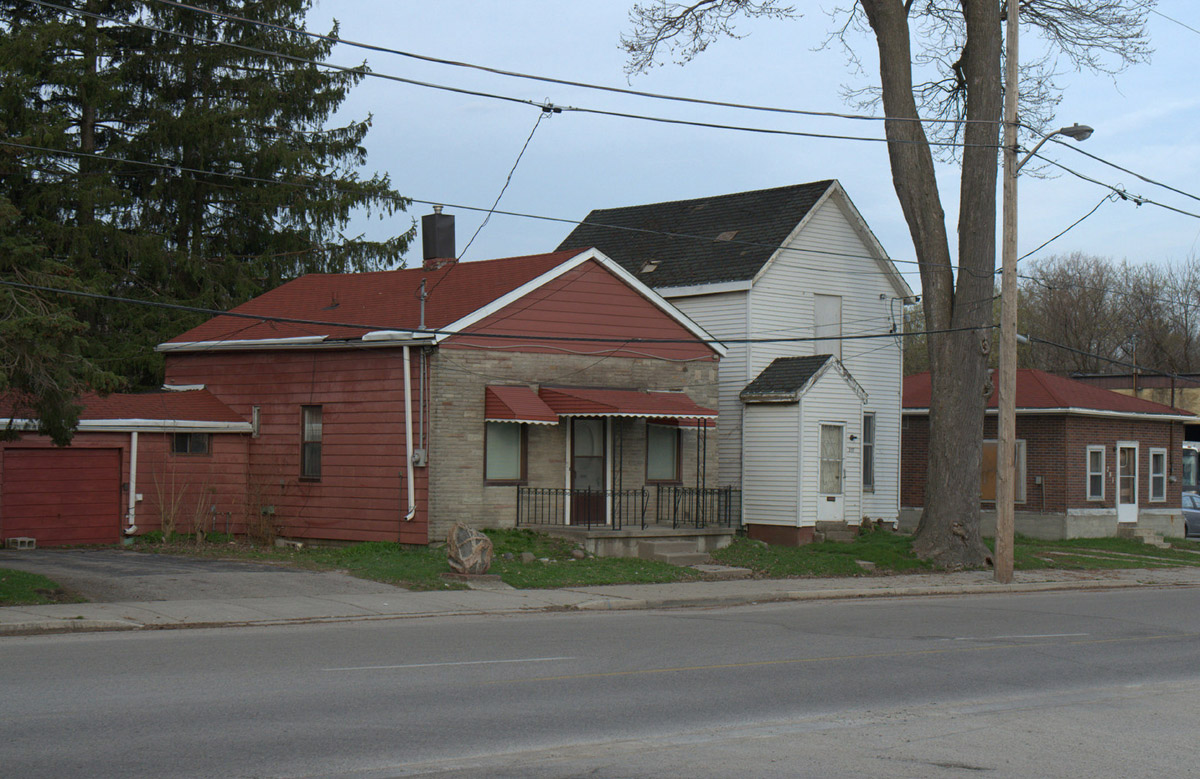African Methodist Episcopal

The African Methodist Episcopal Church at 275 Thames Street.
Many of Upper Canada’s earliest Black settlers were members of the African Methodist Episcopal (AME) Church which formed an Upper Canada Conference in 1840. In the early 1840s, a London Circuit of the AME was formed and around 1848 a church was built on Thames Street, the centre of early Black settlement in London.
At this time, there were about 300 Black residents in London supporting a total of three churches - two Methodist and one Baptist. This population continued to increase particularly after the passage in the United States of the Fugitive Slave Act in 1850. The Act was one reason that caused the Canadian AME churches to break away from their American parent in 1856 and form the British Methodist Episcopal (BME) Church.
In the early 1860s, London’s BME minister, Rev. Lewis C. Chambers, reported on the success he’d had in establishing a temperance society, encouraging Sabbath schools, and in the growth of the congregation. In fact, several years later they purchased a lot on Grey Street, in an area where many in the congregation now lived. Here, they built a new church, in 1868, naming it Beth Emanuel. The little wooden chapel was then sold and for many years was used as a house.
When the original church building on Thames Street was threatened with demolition in 2013, Beth Emanuel offered to provide it with a new home. Hundreds of private citizens assisted by the City of London contributed to the relocation of the chapel to a lot next to Beth Emanuel. At the time of writing (2022), the BMEC has offered the chapel to the Fanshawe Pioneer Village. If sufficient funds are raised this historic building might soon find a new home there to tell the history of Black settlement in the area, North American enslavement, and the Underground Railroad.
Unable to proceed with the project, the former church was later offered to Fanshawe Pioneer Village, London’s living history museum. After extensive fundraising, the building was moved to the Village in 2022 where it was restored and opened in 2023.
Many of Upper Canada’s earliest Black settlers were members of the African Methodist Episcopal (AME) Church which formed an Upper Canada Conference in 1840. In the early 1840s, a London Circuit of the AME was formed and around 1848 a church was built on Thames Street, the centre of early Black settlement in London.
At this time, there were about 300 Black residents in London supporting a total of three churches - two Methodist and one Baptist. This population continued to increase particularly after the passage in the United States of the Fugitive Slave Act in 1850. The Act was one reason that caused the Canadian AME churches to break away from their American parent in 1856 and form the British Methodist Episcopal (BME) Church.
In the early 1860s, London’s BME minister, Rev. Lewis C. Chambers, reported on the success he’d had in establishing a temperance society, encouraging Sabbath schools, and in the growth of the congregation. In fact, several years later they purchased a lot on Grey Street, in an area where many in the congregation now lived. Here, they built a new church, in 1868, naming it Beth Emanuel. The little wooden chapel was then sold and for many years was used as a house.
When the original church building on Thames Street was threatened with demolition in 2013, Beth Emanuel offered to provide it with a new home. Hundreds of private citizens assisted by the City of London contributed to the relocation of the chapel to a lot next to Beth Emanuel. At the time of writing (2022), the BMEC has offered the chapel to the Fanshawe Pioneer Village. If sufficient funds are raised this historic building might soon find a new home there to tell the history of Black settlement in the area, North American enslavement, and the Underground Railroad.
Unable to proceed with the project, the former church was later offered to Fanshawe Pioneer Village, London’s living history museum. After extensive fundraising, the building was moved to the Village in 2022 where it was restored and opened in 2023.
